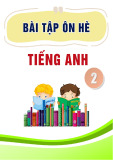
35
HNUE JOURNAL OF SCIENCE
Educational Sciences 2024, Volume 69, Issue 4, pp. 35-45
This paper is available online at https://hnuejs.edu.vn
DOI: 10.18173/2354-1075.2024-0161
STRATEGIES USED TO COPE WITH BOREDOM AMONG ENGLISH-MAJOR STUDENTS
AT NONG LAM UNIVERSITY, HO CHI MINH CITY, VIETNAM
Phan Thi Lan Anh, Hoang Nhi Ha, Nguyen Lien Huong and Vo Van Viet*
Faculty of Foreign Studies and Education, Nong Lam University Ho Chi Minh City,
Ho Chi Minh City, Viet Nam
Coressponding author Vo Van Viet, e-mail: vvviet@hcmuaf.edu.vn
Received July 15, 2024. Revised August 15, 2024. Accepted September 10, 2024.
Abstract. The present study examined the strategies used by English major students to cope
with boredom at Nong Lam University in Ho Chi Minh City, Vietnam. A total of 427 students
from 7 batches (2016-2022) participated in the study. The data from a questionnaire was
collected and analyzed through SPSS version 22.0. The Multidimensional State Boredom
Scale (MSBS) was used to assess levels of academic boredom, while the Coping with
Boredom Scale (CBS) measured students' boredom coping strategies. It was found that the
participants experienced moderate levels of boredom, with Inattention and Disengagement
as the main contributing factors. The most frequently used coping strategies were the
cognitive approach and behavioral approach. There was no significant distinction between
male and female students in terms of using coping boredom strategies. Correlations between
boredom aspects and coping strategies were also examined using correlational analysis.
Pedagogical recommendations for ESP lecturers were also discussed in the paper.
Keywords: cognitive approach, behavioral approach, boredom, coping strategies, EFL students.
1. Introduction
What shapes an effective learning environment? This question resonates across educational
institutions aiming to create engaging and transformative programs. Studies show that active
student participation leads to mental and emotional absorption in learning materials, fostering
interest, motivation, and the ability to connect knowledge to real-world applications [1].
Significantly, established motivation fosters resilience in students, helping them persist through
rigorous courses. Motivated students develop a growth mindset, seeing problems as opportunities
rather than challenges. These individuals better overcome academic challenges, maintain clear
goals, and stay committed to their learning [2].
Unfortunately, nowadays, not all institutions possess an engaging academic model that raises
students’ interest. In contrast to the idea of academic engagement, academic boredom can
significantly impact students’ academic performance, educational outcomes, and overall well-
being. Academic boredom, identified as a serious threat to the educational system, is a negative
emotion linked to academic achievement. It leads to high cognitive failures, impairing the ability
to process information, acquire knowledge, and perform tasks effectively [3]. Therefore, these
cognitive failures can hinder students’ learning achievement and overall academic performance,
thus, elevating dropout rates. In addition, according to Mann and Robinson (2009), academic

Phan TLA, Hoang NH, Nguyen LH & Vo VV*
36
boredom is one of the causes of low levels of academic achievement, motivation, classroom
engagement, and attention [4]. When students feel bored and disengaged in an academic setting,
their motivation diminishes, leading to a lack of attention and participation during class time [5].
As a result, this will eventually limit their ability to comprehend and remember taught materials,
hindering their academic progress. Furthermore, the negative implications of academic boredom
extend beyond the immediate impact of academic achievements. Academic boredom can lead to
frustration, dissatisfaction, and decreased self-esteem. These negative feelings cause students to
doubt their abilities, creating a cycle of self-doubt that hinders their potential [6].
Nong Lam University in Ho Chi Minh City (NLU) is well-known for its mix of students
from various backgrounds and interests. Therefore, in order to improve education and student
satisfaction, educators, administrators, and policymakers must comprehend the specifics of
academic boredom in this context. Additionally, throughout the previous four years, there has
been a tendency for the dropout rate among English majors to increase. Thus, this report aims to
explore the factors contributing to academic boredom and develop effective strategies to mitigate
its impact on students' learning experiences and overall well-being.
2. Content
2.1. Academic boredom among English majors
Academic boredom refers to negative emotions such as demotivated and inattentive feelings,
a sense of emptiness, and a lack of purpose, which surely influence students’ academic
performance and achievements [7]. Many relevant studies about students’ boredom have been
documented in higher-education settings. However, little attention has been given to the issue of
boredom within foreign language (L2) classrooms, including English although English has
become a global language [4]. Recent educational journals have documented the prevalence of
boredom in learning English as a foreign language. Research shows that university students often
experience boredom in their English studies. To illustrate, 92,6% of university students in China
experience boredom [9], while a similar state of boredom takes place in English learning
classrooms for both English majors in Poland and Iran [8], [9] and non-English majors in China and
Thailand [14], [15]. Relevant research also indicated that the success of learning a second language
is influenced by elements such as cognitive, affective, and social factors [14]. One of the affective
and social factors that negatively impact learners’ progress in learning English as a foreign language
(EFL) is boredom [18]. English learners who experience academic boredom such as low motivation
to learn, or inattentive emotions will face the consequences of poor academic achievements [7].
Similarly, research demonstrated clear correlations between students’ boredom and the quality
of EFL [20]. Obviously, students who run into trouble with learning EFL caused by boredom
often tend to turn to coping strategies such as chatting with friends, playing games, or using social
networks instead of completing planned academic activities or completing task performance [21].
As a result, these outcomes have negative influences on students’ retention, their academic
performance and even academic dropouts [22].
In Vietnam, the government has implemented policies to enhance English learning at all
educational levels. Recognizing its importance, many university students choose to major in
English for academic and career advancement. Given the negative effects of boredom on EFL and
the lack of attention to this issue in Vietnam, this research investigates academic boredom among
English majors at NLU.
2.2. Strategies for coping with academic boredom
Exploring academic boredom and its triggers, as well as developing strategies to address it,
is crucial for educators to improve educational quality. Research has identified common student

Investigating academic boredom and coping strategies among English major students at…
37
coping strategies, such as napping, messaging, playing games, and leaving during breaks [23].
These strategies significantly impact academic performance and achievement, indicating that
boredom and learning outcomes frequently influence each other.
A comprehensive framework concerning student’s boredom coping strategies has recently
been developed by Nett et al [24]. The coping strategies were categorized under four components:
cognitive - approach, behavioral - approach, cognitive - avoidance, and behavioral - avoidance.
Cognitive-approach strategies mean students must change their perception of the lesson to see the
importance of it to involve in, while behavioral-approach strategies require students as an
important subject to change the boring situation such as asking the teacher for more interesting
tasks or questions during lessons [24]. Conversely, cognitive-avoidance strategies are mental
activities students use to cope with boredom (e.g., studying something irrelevant during lessons);
whereas behavioral-avoidance strategies are behavioral activities students use to dispel boredom
(e.g., chatting with friends or playing games). Nett et al. [24] developed a scale of a four-factor
structure to assess student’s boredom in math class and it was confirmed in the sample. The result
revealed that those who used cognitive-approach strategies in the class significantly experienced
less boredom than those who used behavioral-approach, cognitive and behavioral-avoidance
strategies. Their framework was also used in other research to assess boredom coping strategies
of university students from Canada, China and Turkey [21], [25], [26]. Results collected from
the above research share a coherent correlation between four-factor coping strategies and
students’ academic boredom developed by Nett et al. [24]. This indicates that the four-factor
model of boredom coping strategies can be used to investigate how universal students with
different cultures and educational settings cope with academic boredom. Thus, these four
components of boredom coping strategies were adopted in the present research.
2.3. Research methods
2.3.1. Research design
This study employs a quantitative research design using a survey method to investigate
academic boredom and coping strategies among English major students at NLU. The survey
method is selected for its effectiveness in collecting data from a large number of participants,
enabling the identification of patterns and relationships between variables.
2.3.2. Participants
A total of 427 English major students from 7 batches (from 2016-2022) volunteered to
participate in the study. Of the sample of student participants, 26.2 % (n= 112) were male and
73.8 % (n= 315) were female. Nearly half of the surveyed students belonged to batch 2022, which
was followed by batch 2020, accounting for 24.1% (n= 103). The students from batch 2021
constituted 17.1% (n= 71), batch 2019 6.6% (n= 28), batch 2018 1.6 percent (n= 7), batch 2017
0.5% (n=2) and batch 2016 0.2% (n= 1) of the whole sample of participants.
2.3.3. Survey instruments
Academic Boredom Scale. Twenty-nine items on academic boredom from the
Multidimensional State Boredom Scale (MSBS) developed by Fahlman et al. [27] were used to
evaluate academic boredom. The MSBS is a psychological tool designed to assess various facets
of boredom (such as Agitated Affect-AAF, Disengagement-DIS, Dysphoric Affect-DAF,
Inattention-INA, Time Perception-TPE. Each item uses a Likert-scale response format, ranging
from 1 (strongly disagree) to 7 (strongly agree), which enables students to indicate the extent to
which the they agree with the statement. Higher scores on the MSBS, therefore, reflect greater
boredom in the individual.
Coping with Boredom Scale (CBS). Twenty items on students’ boredom coping strategies
from the Coping with Boredom Scale (CBS) developed by Nett et al. (2010) were used to assess
students’ boredom coping strategies. The scale consists of 20 items with 5 items, divided into four

Phan TLA, Hoang NH, Nguyen LH & Vo VV*
38
subcategories: cognitive approach, behavioral approach, cognitive avoidance, and behavioral
avoidance, with 5 items in each subcategory. It employs a 7-point Likert-type scale, ranging from
1 (strongly disagree) to 7 (strongly agree). Higher scores on the CBS therefore reflect greater
coping with boredom employed by the respondents.
The reliability of the questionnaire was assessed through internal consistency using
Cronbach's Alpha coefficient. The results of the reliability assessment for the instrument used in
the study all yielded Cronbach's Alpha values greater than 0.8, indicating that the questionnaire
effectively measures the concepts examined in the research.
2.3.4. Data analysis
The data were analyzed using SPSS version 22.0. Descriptive statistics, such as mean,
standard deviation, and percentages, provided an overview of participants' demographic
characteristics, their levels of academic boredom, and the coping strategies they employed.
Additionally, correlation analysis was used to examine the strength and direction of associations
between different variables. Specifically, Pearson correlation coefficients assessed the linear
relationships between five facets of academic boredom and four coping strategies.
2.4. Results and Discussion
2.4.1. Descriptive analysis
2.4.1.1 Students' level of boredom
Section 1 of the MSBS consists of 29 items that are categorized into five dimensions which
indicate students’ experience of boredom: Disengagement, Agitated Affect, Inattention,
Dysphoric Affect, and Time Perception. These dimensions provide insights into different aspects
of boredom experienced by respondents.
As seen in Table 1, students at NLU reported moderate to high levels of boredom, with means
ranging from 3.87 to 4.45. Disengagement and Inattention had the highest scores among the five
subscales, with means of 4.45 and 4.22, respectively. These factors indicate that students were
mainly bored due to a lack of attention and involvement in tasks. They were often "easily
distracted" and found it "difficult to focus on lessons," feeling detached or disconnected from
their activities, contributing to their overall boredom.
Table 2 shows that the other three aspects of boredom (dysphoric affect, agitated affect, and
time perception) had similar means (3.88 and 3.87). This indicates that participants felt unease or
agitation, and sometimes sadness, discontent, and dissatisfaction when bored. Consequently, they
experienced boredom through these emotions and perceived time as passing more slowly.
The five boredom subscales indicated various ways in which the respondents may experience
and express boredom, stating that boredom is a complex emotional state with different facets.
Table 1. Descriptive statistics of boredom subscales
Subscales
Mean
Std. Deviation
Agitated Affect
3.87
1.367
Disengagement
4.2
1.22
Dysphoric Affect
3.80
1.40
Inattention
4.44
1.343
Time Perception
3.87
1.36
2.4.1.2. Boredom Coping Strategies
Cognitive approach:
The cognitive approach to coping with boredom involves changing one's perceptions or
mental processes about a boring situation. Strategies include reminding oneself of the lesson's

Investigating academic boredom and coping strategies among English major students at…
39
importance, maintaining focus, and re-concentrating on specific parts of the lesson. Table 2
evaluated how surveyed students used the cognitive approach to deal with their academic
boredom. The data shows that students frequently use these cognitive strategies, with a mean
score of around 5.0. Over 80% reported reminding themselves of the lesson's importance and
actively trying to improve their concentration whenever they felt bored. These efforts aim to
overcome the negative feeling of boredom and stay engaged in their studies.
Table 2. Students’ use of cognitive approach strategies
1
2
3
4
5
6
7
M
Std.D
N
%
n
%
n
%
n
%
N
%
n
%
n
%
When I am
bored in the
classroom I
try to pay
attention to
the lesson
more
13
3.0
11
2.6
25
5.9
126
29.5
124
29.0
80
18.7
48
11.2
4.8
1.4
When I am
bored in the
classroom I
tell myself to
concentrate
again
7
1.6
14
3.3
20
4.7
118
27.6
107
25.1
94
22.0
67
15.7
5.0
1.4
When I am
bored in the
classroom I
make myself
aware of the
importance of
the issue
6
1.4
18
4.2
18
4.2
126
29.5
114
26.7
86
20.1
59
13.8
4.9
1.3
When I am
bored in the
classroom I
try to make
myself aware
that this class
is important
6
1.4
17
4.0
16
3.7
118
27.6
112
26.2
96
22.5
62
14.5
5.0
1,3
When I am
bored in the
classroom I
make myself
focus again
because the
issue is
important
12
2.8
19
4.4
16
3.7
121
28.3
117
27.4
86
20.1
56
13.1
4.9
1.4
Behavioral approach
Table 3 describes the frequency of the behavioral approach employed by the students in this
study. Behavioral approach strategies require students to change the boring situation itself by, for
instance, asking teachers for more interesting tasks or questions during lessons, suggesting
variety in lessons, and redirecting the discussion. The behavioral approach was moderately used
with the mean ranging from 3.8 to 4.2. The most common strategy in the behavioral approach was
requesting more interesting tasks from teachers with the agreement reaching over 30%, followed
by asking the instructor if the class could do something else (29%). Another frequently used strategy

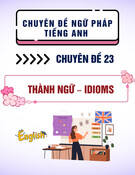








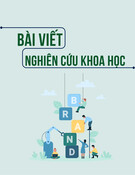
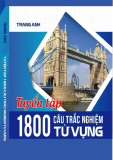
![Tài liệu Từ vựng tiếng Anh Trung cấp [mới nhất]](https://cdn.tailieu.vn/images/document/thumbnail/2025/20250913/nguyentuan250421@gmail.com/135x160/99491757910839.jpg)
![Tài liệu Từ vựng Tiếng Anh theo chủ đề [mới nhất]](https://cdn.tailieu.vn/images/document/thumbnail/2025/20250913/namdhuet@gmail.com/135x160/83251757753810.jpg)


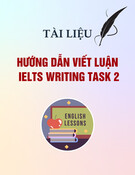
![Tài liệu Từ vựng tiếng Anh cho bé [chuẩn nhất/mới nhất]](https://cdn.tailieu.vn/images/document/thumbnail/2025/20250731/huadaithesang2509@gmail.com/135x160/18631754013896.jpg)





